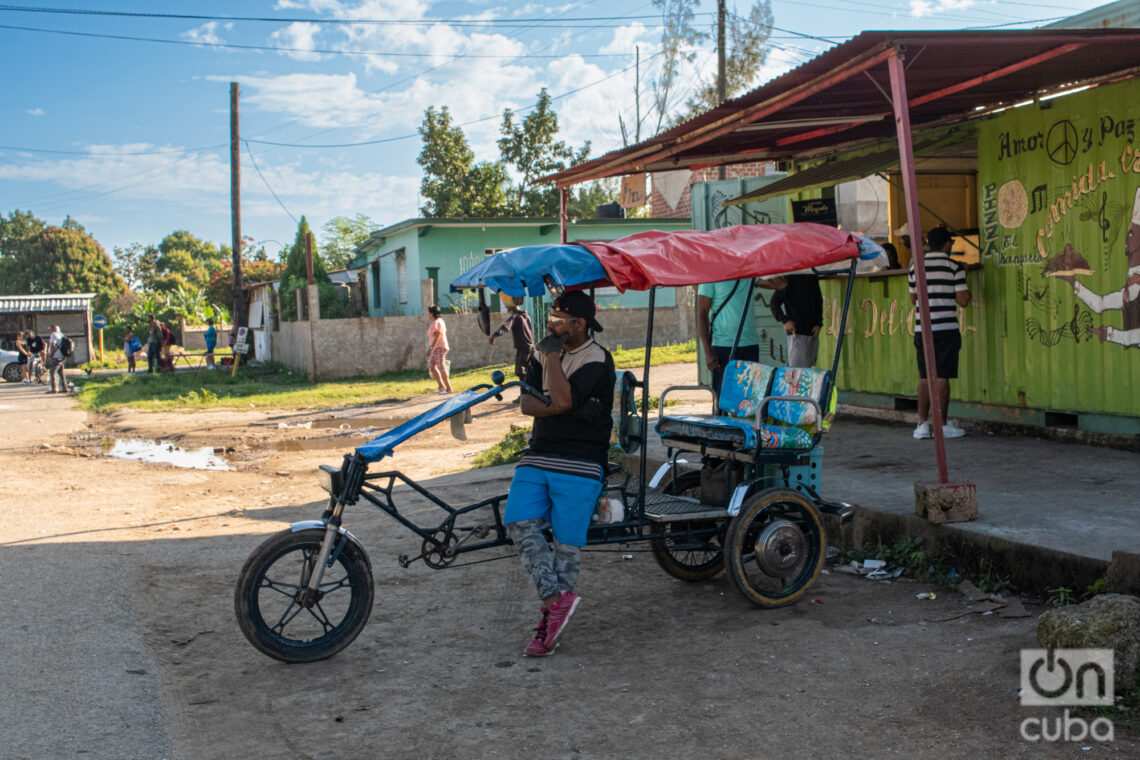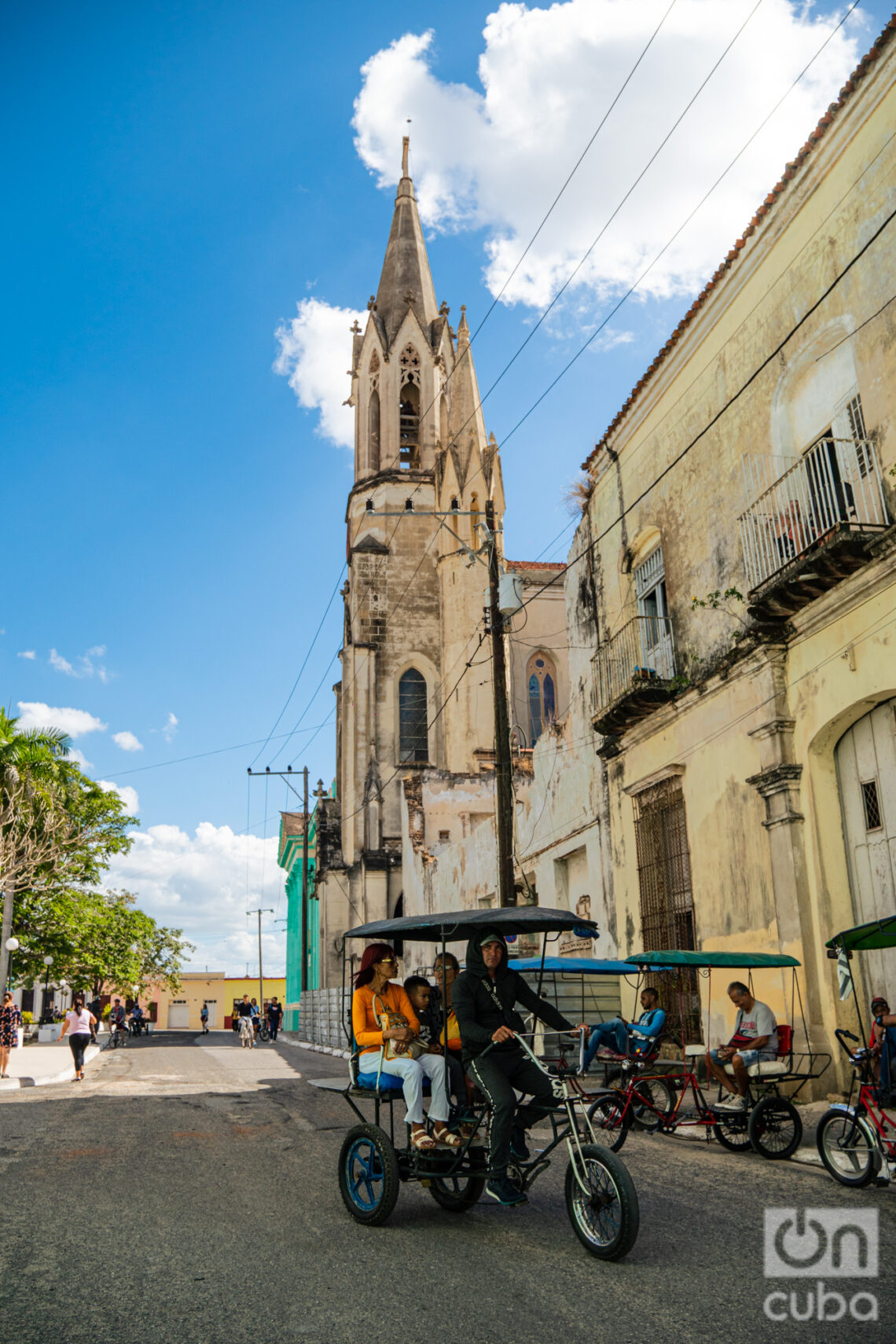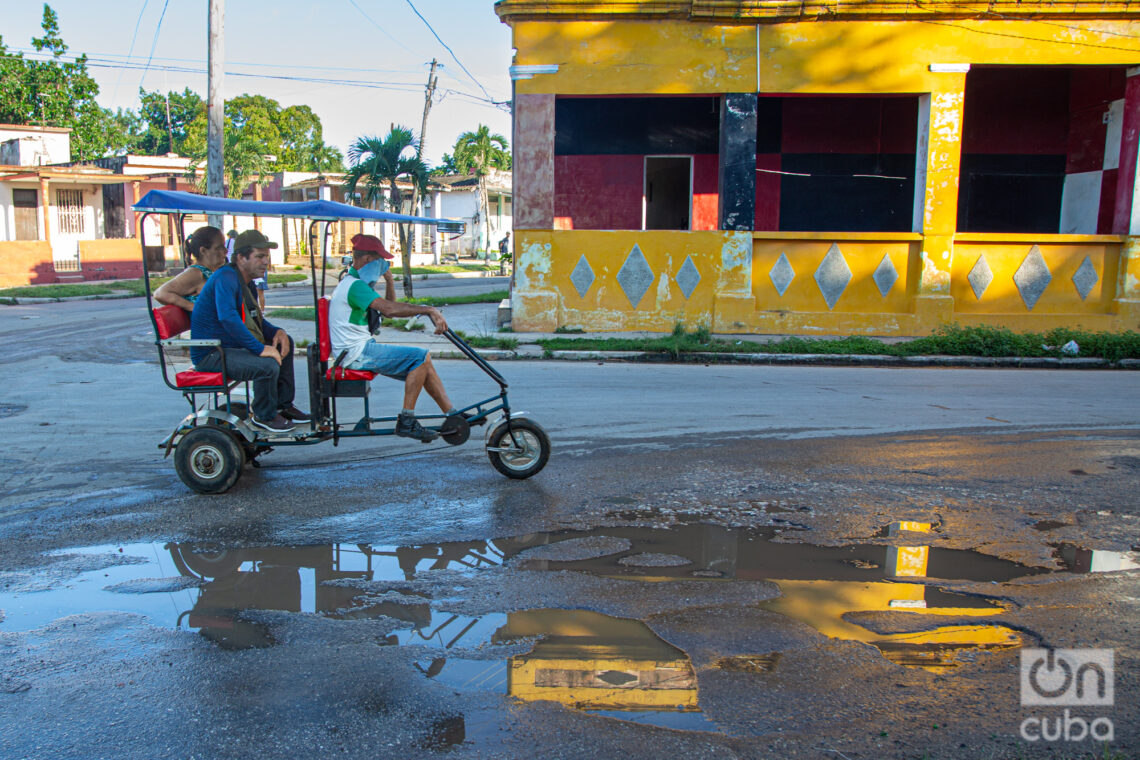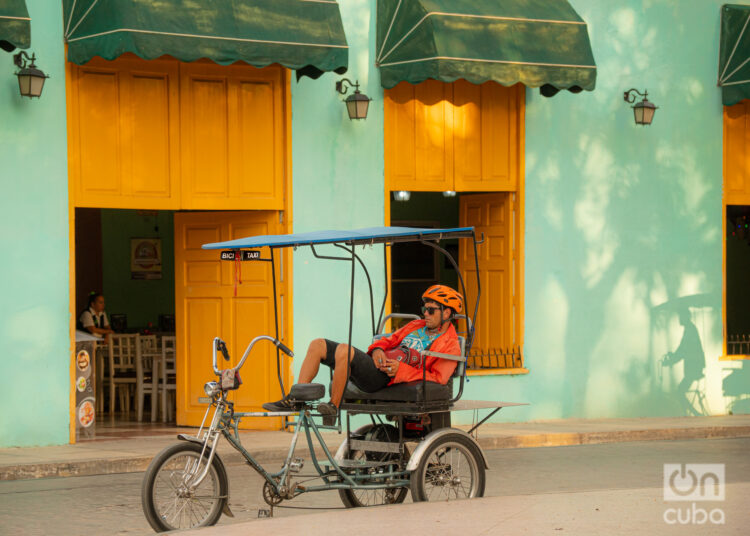When my grandmother Nanay divided her house and gave a part to each of her granddaughters, Raúl, my cousin Marta’s husband, had his pedicab. It was the Special Period, I was about 6 or 7 years old and I had never seen such a strange bicycle in my life. Every time I went to my grandparents’ house on Carretera del Morro in Santiago de Cuba, I crossed my fingers that three things would happen. The first: that my grandmother made me eggs with fried plantains. The second: that my grandfather gave me one dollar that his friend from the United States sent him. And the third: get on my cousin’s husband Raúl’s tricycle. The first two wishes were always fulfilled, but I don’t think I ever got on the “tricycle,” as I called the strange bicycle with two seats in the back. If only I had known then how many times I would have to get on pedicabs all over Cuba!
It seems easy, but you have to have a good heart to hit the pedals with two clients sitting behind you. Sometimes drivers exaggerate with prices; but the truth is that in many places in Cuba, pedicabs save your life. Where there are no bus routes, no cars, not even horse carts, there they are, almost always in groups solving the universal dilemmas while waiting for clients to arrive.
Part of my family is from Holguín and there, to go from Nuevo Llano to Calixto García Park, the only means of transportation was pedicabs. That distance could be walked, but with a small child and the Holguín sun at noon, or when it got dark, making the journey on foot was an ordeal. They were the salvation.
The same thing happens in many other provinces where, sometimes, they are the only option for uncomfortable stretches. They are not as expensive as those in Old Havana, but they also do not have their expertise since they must zigzag between garbage tanks, potholes, people, and dirty water falling from some balcony in miraculous static. I have good chemistry with those from Old Havana.

I remember that before they “would go crazy” to get a fare, they pulled the rug out from under each other’s feet to get the trip. But for a long time, I have noticed a certain camaraderie and organization among them. I suppose they have a kind of unofficial union that allows them to coordinate and know who gets the trips. It is no longer a solitary job, but a job in which you need others to be successful.
Sometimes I take pedicabs when I’m in a hurry to go from Parque de la Fraternidad to Nave Oficio de Isla, on Avenida del Puerto, and when I ask, they look at each other and one says: “Eugh, that’s very far”; another reaffirms “Oh yes, the worst thing is that there is a little climb that is really hard to pedal.” Someone else comes out and looks at me as if I were a foreigner: “It’s going to be a little expensive….” In the end, none of them had to make the trip.
“Come on, Guajiro; you take the trip, it’s already settled!” shouts one who was also a Guajiro, but not as much. The trip was very expensive, but we talked and I told him that I am also a guajira and that Raúl, my cousin Marta’s husband, there on Carretera del Morro, also had a pedicab.
It is a celebration to appreciate the variety of styles and shapes of pedicabs. Some have thin wheels; others, wheels that look like those of carts. The rudders can be straight or curved like those on road bikes. The seats are an ode to Cuban inventiveness. I have seen them handmade, made with tubes and sponge. Some are from Girón buses and others from Yutong, camouflaged with a tarp or covered with a beach towel.


I once took a course on travel chronicles and the teacher, who is an eminent geek, pointed out that one of the great vices of travel stories is recreating those encounters with taxi drivers, pedicab drivers and cart drivers. The account of those conversations, according to those who know, is a facile and hackneyed resource in the travel chronicle. But a million bad chroniclers are out there repeating phrases and stories they hear from the pedicab drivers.
The other day I got on one of them with someone called Jorge; he has been working on this since he was 21 and he is 50. As I get into conversations with all the pedicab drivers, they tell me about their lives and even give me their phone number in case one day I need something. The most surprising thing about Jorge’s story is that, for 24 hours he works as a paramedic driver at the SIUM, and in the 72 hours he rests he rides his pedicab. He says that he is tired and that his legs don’t respond like before, but that he just keeps going, until God allows it. When I got off, he asked me if I was a Christian, he gave me his number and told me that he didn’t believe in anything satanic, only in God; but he didn’t like going to church, because he had realized that there were bad people in church too. I thanked him and told him that I was not a Christian and that I didn’t go to church either.
It may be that right now the most famous pedicab driver is Lázaro from Yarelis. But the stories of Armandito el Sabroso have gone around Cuba. They were told to me by a Catholic, who is also a graffiti artist and repartero. No one knows how the stories of Armandito el Sabroso have reached so many diverse people. To top it off, every time someone tells them, they add their personal touch and thus the legend of the most famous pedicab driver on the planet grows.

This Catholic graffiti artist told me that Armandito was the first to raise the price of the service. At that time, the stretch cost 5 pesos. A foreigner got on and, without protesting, gave him 5 dollars. He immediately understood that his work had more value than what he had been giving it until then. Probably those who charge me a lot today from Parque de la Fraternidad to Avenida del Puerto not only want to support their families but also keep alive the legacy of El Sabroso, the first to give the pedal the value it deserved.
One of the most famous stories about Armandito is that of August 5, 1994. They say that he was working, very normally, making trips from one place to the other, like every day. Suddenly, a man got on and shouted like a madman: “Down with Fidel!” He got scared, naturally, and asked the demon-possessed man what was happening. “This is over now! This is falling today!”
The pedicab driver collected his fare and continued working a little in disbelief, but with expectation. Shortly after, another man got on and shouted like a madman: “Long live Fidel!” He got off in an alley and continued with his harangue.
That day Armandito el Sabroso understood that “this” is not going to fall overnight. He understood that his vocation of service should be the same for everyone, regardless of the color of his slogan.
It is not known where the most famous pedicab driver on the planet is now. It is said that one day he met a foreigner and they spent an idyllic week on wheels. When she was going to say goodbye, they gave each other a long and passionate hug with the Capitol in the background. While he hugged her and grabbed her buttock lovingly, he saw how a guy took away his pedicab. In a second, they say, Armandito had to decide whether to run after the thief or stay attached to the warm and fragrant woman’s chest.
The stories of El Sabroso are similar to the history of Cuba. They are a parable that levitates between reality and fiction. I believe that Armandito goes around some country in the world telling, in different languages, stories about when he was a pedicab driver. And the mean man who stole his pedicab may be pedaling around Old Havana dodging potholes and overflowing garbage tanks, praying to find a foreigner.


As for me, I still remember my visits to my grandparents’ house in Carretera del Morro as the most beautiful thing of my childhood, between the dollar that my grandfather gave me, the egg with fried plantains that my grandmother made me, and the desire to ride in the pedicab of Raúl, my cousin’s husband.










